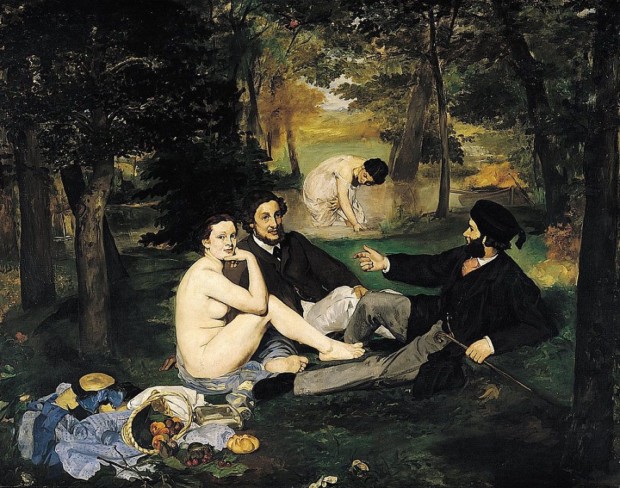Themale gaze is simply how women are viewed from the perspective of a white heterosexual man. Those views can be translated several ways. For example, a woman can be viewed simply as an object, and shown no respect other than men enjoying the physical sexual pleasure that they derive from this “gaze”. This has been portrayed in art and media for years, which is why it is still pervasive in art and pop culture today. The only difference today is that women have begun to own their sexuality and their bodies more. Berger explains that the social presence of a women is different in kind from that of a man. He explains, “A man’s presence suggests what he is capable of doing to you or for you” (Berger, 46). By contrast, he says “A woman’s presence expresses her own attitude to herself and defines what cannot be done to her” (Berger, 46). Berger then goes on to say that “One might simplify this by saying: men act, and women appear” (Berger, 47). Berger is saying that men look at women and women look at themselves being looked at. If you scroll down and take a look at the painting from Jacob Tintoretto, the woman is slightly exposed and spread out with a vulnerable look for her audience.
 |
| Summer is represented here as Ceres, goddess of agriculture, reclining in front of her attribute, a row of wheat stalks. |
By definition, patriarchy is a system of society or government in which the father or eldest male is head of the family and descent is traced through the male line.However, according to Bell Hooks patriarchy is“the single most life-threatening social disease assaulting the male body and spirit in our nation” (Hooks, 17). Simply put, patriarchy is this socially constructed rule that men are the head of household, make all decisions, and women/girls cannot do what men/boys do. Hooks did not agree with patriarchy and has the rebellious stories from her childhood to prove it. Hooks grew up in a very patriarchal household and remembers being told at an early age that certain things were just for boys and girls could not do them. For example, she recalls a time she wanted to play marbles with her brother and was told “girls do not play with marbles” (Hooks, 20). When she would not agree, she would be beaten and punished by her parents, her mother agreeing with her father and suggesting that “Dad had done the right thing by putting me in my place, by restoring the natural social order” (Hooks, 21). Patriarchy is definitely constantly shown in art as well as media. Perfect example would be ads about cleaning products, back in the day the only face on those ads were women. Portraying the idea that cleaning is for women.
 |
| Old school cleaning add that suggests being wife is all about "working for your husband" cleaning, cooking, etc. |
Though not by definition, I always was aware of the “male gaze” because people always talk about how women have to look pleasing to the eyes on men. In media they always say, “sex sells”. Its kind of pathetic to me that some people actually think the sole purpose of a women’s body is to be aesthetically pleasing to men. One thing I’ve just learned recently is that when men painted females and their bodies, they would never include hair because “hair is associated with sexual power, with passion” (Berger, 55). It was something that never crossed my mind but looking back something I do notice was very true with paintings of women. Berger states “women are there to feed and appetite, not to have any of their own” (Berger, 55) which ties into the patriarchal view. As far as patriarchy, honestly that is how my household was growing up. The men worked and payed the bills, and the women also worked… and took care of the kids, and cleaned, and cooked dinner. I guess the difference in my household was that my grandma wanted to do those things, rather than feeling like that was her place. Though I grew up in a patriarchal household, I’ve always been very openminded and I don’t like to do dishes. Therefore, I was always questioning gender roles.
Somewhere, someone tried to make female gaze a thing. Female gaze is “a feminist film theoretical term representing the gaze of the female viewer. It is a response to feminist film theorist Laura Mulvey's term, "the male gaze", which represents not only the gaze of a heterosexual male viewer but also the gaze of the male character and the male creator of the film”. However, “In contemporary usage, the female gaze has been used to refer to the perspective a female filmmaker (screenwriter/director/producer) brings to a film that would be different from a male view of the subject”. So essentially, they do not have the same meaning and the “female gaze” is not sexualized like the male gaze is. The female gaze is more for a different perspective to be able to add more depth to the photo/video/etc., not for sexual gain.
Works Cited
- Hooks, Bell. Understanding Patriarchy. Louisville Anarchist Federation Federation, 2010.
- “Female Gaze.” Wikipedia, Wikimedia Foundation, 2 Sept. 2019, https://en.wikipedia.org/wiki/Female_gaze.
- Berger, John. Ways of Seeing. British Broadcasting Corporation, 2008.








